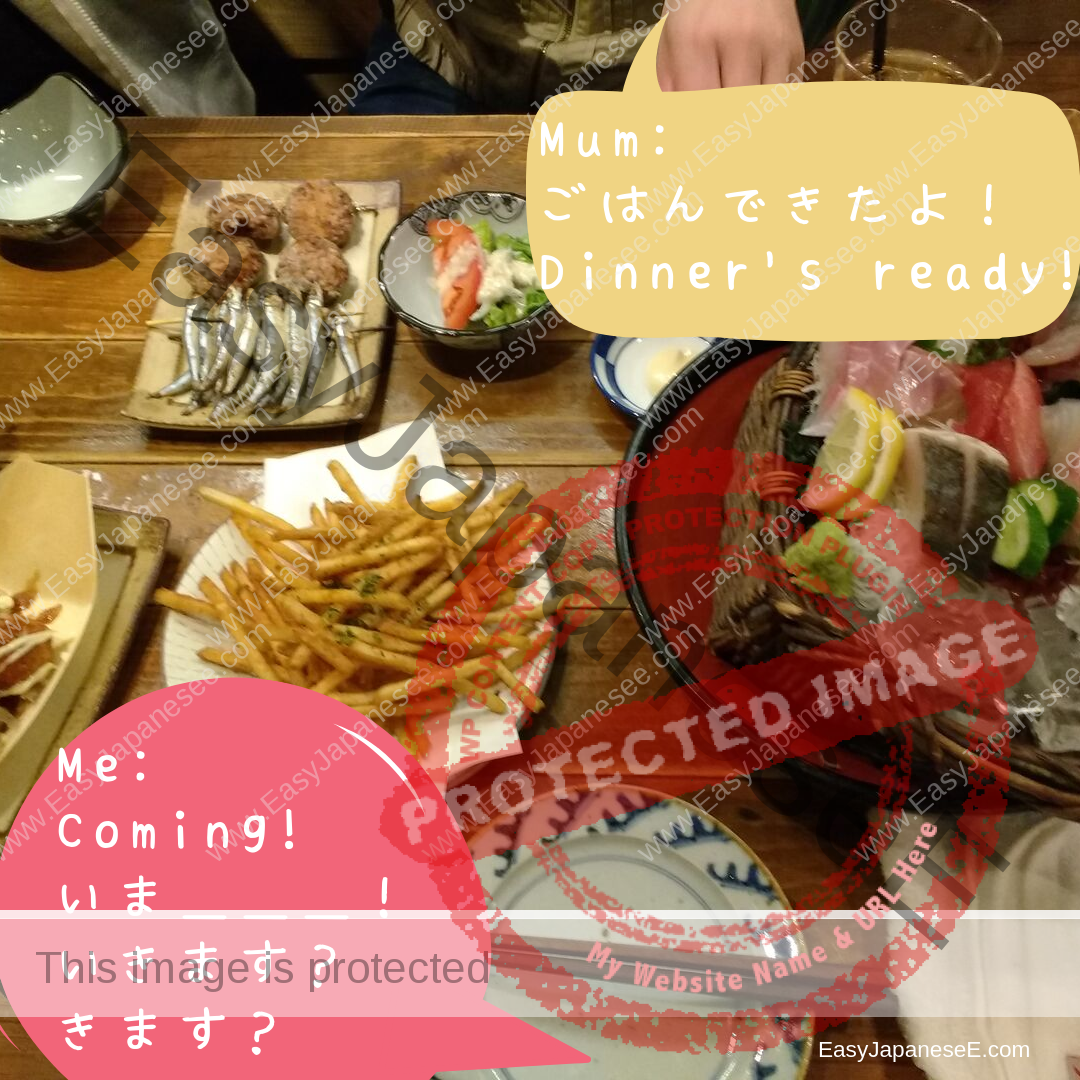Mum: Dinner’s ready.ごはんできたよ!
Me: Coming! いま____!
If you have to say いきます or きます, which would be better?
いきます/いく and きます/くる are among the most commonly used verbs and they are usually translated as “to go” and “to come” respectively. So many of my students originally say いま、きます . However, in Japanese いま いきます! is more appropriate between the two.
In Japanese, the differentiation between いく/くる is most of the time based on where the speaker is at the time of the sentence being spoken/written. If the movement is away from where the speaker is, いく is used and if the movement is towards the speaker’s current location, くる is used. In the above conversation, I have to move away from where I was towards where my mum was, so I say いきます。Let’s have a look at a few more examples.
Example 1) Your host mother wants you to come to her:
Your host mother: ちょっと きてくれませんか。
You: はい、いま いきます。
Example 2) You want your friend to come to your house tomorrow.
You: あした、うちに きて。
Your friend: オーケー、あした いくね。
Example 3) You want to go to Japan.
You not in Japan: 日本にいきたいです。
Your friend in Japan: ぜひ、きてください。
Example 4) You are about to leave Japan but want to come back to Japan again.
You: 日本に また きたいです。
Your friend in Japan: ぜひ、また きて ください。
<Summary>
いく/いきます when your destination is away from where you are now
くる/きます when your destination is where you currently are (even if you may have to move away from there in the meantime (like the Example 4)).
There are rare exceptions to this rule, so I will have to talk about いく/くる again one day but for now, please remember the above rule.
If you liked this article, please share it with your friends using the social media buttons below.

